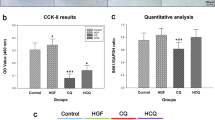Abstract
Objective
To evaluate the effect of Bear Bile Powder(熊胆粉, BBP) on the growth and apoptosis of HepG2 human hepatocellular carcinoma cells, and investigate the possible molecular mechanisms mediating its anti-cancer activity.
Methods
HepG2 cells were treated with 0.4–1.0 mg/mL of BBP for 24, 48 and 72 h. The viability of HePG2 cells was determined by MTT assay. Cellular morphology was observed via phase-contrast microscopy. Fluorescence-activated cell sorting analysis with Annexin-V/propidium idodide and 5,5′,6,6′-tetrachloro-1,1′,3,3′-tetraethyl-benzimidazol-carbocyanine iodide (JC-1) staining was performed to determine cell apoptosis and the loss of mitochondrial membrane potential, respectively. Activation of caspase-9 and -3 was evaluated by a colorimetric assay.
Results
The treatment with 0.4–1 mg/mL of BBP for 24, 48, or 72 h respectively reduced cell viability significantly by 7%–60%, 20%–90% or 25%–98%, compared with the untreated control cells (P<0.01). In addition, BBP treatment induced morphological changes in HepG2 cells. Furthermore, after treated with 0, 0.4, 0.6, 0.8 and 1.0 mg/mL of BBP, apoptosis cells (including early and late apoptotic cells) were 18.0%±1.3%, 34.9%±2.2%, 33.9%±2.8%, 37.4%±2.8% and 46.0%±2.5%, respectively (P<0.05); and the percentage of cells with reduced JC-1 red fluorescence were 6.6%±0.8%, 8.5%±0.8%, 13.5%±1.6%, 17.6%±2.3% and 46.7%±3.6%, respectively (P<0.01). Finally, BBP treatment significantly and dose-dependently induced activation of both caspase-9 and caspase-3 in HepG2 cells (P<0.05).
Conclusions
BBP could inhibit the growth of HepG2 hepatocellular cancer cells through mitochondrion-mediated apoptosis, which may, in part, explain its anti-cancer activity. BBP may be a potential novel therapeutic agent for the treatment of hepatocellular carcinoma.
Similar content being viewed by others
References
Gomaa AI, Khan SA, Toledano MB, Waked I, Taylor-Robinson SD. Hepatocellular carcinoma: epidemiology, risk factors and pathogenesis. World J Gastroenterol 2008;14:4300–4308.
Parkin DM, Pisani P, Ferlay J. Estimates of the worldwide incidence of 25 major cancers in 1990. Int J Cancer 1999;80:827–841.
Montalto G, Cervello M, Giannitrapani L, Dantona F, Terranova A, Castagnetta LA. Epidemiology, risk factors, and natural history of hepatocellular carcinoma. Ann N Y Acad Sci 2002;963:13–20.
Sherman M. Hepatocellular carcinoma: epidemiology, risk factors, and screening. Semin Liver Dis 2005;25:143–154.
Parkin DM, Bray F, Ferlay J, Pisani P. Global cancer statistics, 2002. CA Cancer J Clin 2005;55:74–108.
Yeh CT, Chen TC, Chang ML, Hsu CW, Yeh TS, Lee WC, et al. Identification of NV-F virus DNA in hepatocellular carcinoma. J Med Virol 2007;79:92–96.
Levin, B and Amos C. Therapy of unresectable hepatocellular carcinoma. N Engl J Med 1995;332:1294–1296.
Abou-Alfa GK, Huitzil-Melendez FD, O’Reilly EM, Saltz LB. Current management of advanced hepatocellular carcinoma. Gastrointest Cancer Res 2008;2:64–70.
Boose G, Stopper H. Genotoxicity of several clinically used topoisomerase II inhibitors. Toxicol Letters 2000;116:7–16.
Gordaliza M. Natural products as leads to anticancer drugs. Clin Transl Oncol 2007;9:767–776.
Newman DJ, Cragg GM, Snader KM. The influence of natural products upon drug discovery. Nat Prod Rep 2000;17:215–234.
Gao XM, ed. Chinese materia medica. Bear bile. Bejing: China Chinese Medicine Publisher;2002:160–161.
Wang LY, Gao X, Tong ZL, Wang XG. Summary on pharmacological action and clinical study of the chemical composition of bear bile. Chin J Inform Tradit Chin Med (Chin) 2005;22:30–33.
Yu SZ. Pharmacological effects and clinical application of Bear bile. Lishizhen Med Mater Med Res (Chin) 2007;18:707–708.
Feng Y, Siu K, Wang N, Ng KM, Tsao SW, Nagamatsu T, Tong Y. Bear bile: dilemma of traditional medicinal use and animal protection. J Ethnobiol Ethnomed 2009;12:2.
Sheng L, Zhang ML, Li H. Clinical observation on elimination of chronic hepatitis B induced jaundice in 33 CHB patients after administrated with Xiongdan Capsule. J Clin Hepatol 1994;7:40–41.
Xu HB, Sun X, Wen FC, Zhou JH, Li SL, Ding T, Liu L. A survey and prospect of the research of bear bile. Chin J Inform Tradit Chin Med (Chin) 1998;5:18–20.
Jin Y, Wen YS, Cui YZ, Jin RH. Effects of bears’ bile on the expression of tumor cell p53 protein. Chin J Integr Tradit West Med (Chin) 2006;26:86–88.
Cory S, Adams JM. The Bcl-2 family: regulators of the cellular life-of-death switch. Nat Rev Cancer 2002;2:647–656.
Adams JM, Cory S. The Bcl-2 apoptotic switch in cancer development and therapy. Oncogene 2007;26:1324–1337.
Schendel SL, Montal M, Reed JC. Bcl-2 family proteins as ion-channels. Cell Death Differ 1998;5:372–380.
Petros AM, Olejniczak ET, Fesik SW. Structural biology of Bcl-2 family of proteins. Biochimica et Biophysica Acta 2004;1644:83–94.
Peng J, Tan C, Roberts GJ, Nikolaeva O, Lapolla SM, Andrews DW, Lin J. tBid elicits a conformational alteration in membrane-bound Bcl-2 such that it inhibits Bax Pore formation. J Biol Chem 2006;281:35802–35811.
Peng J, Ding J, Tan C, Baggenstoss B, Zhang Z, Lapolla SM, et al. Oligomerization of membrane-bound Bcl-2 is involved in its pore formation induced by tBid. Apoptosis 2009;14:1145–1153.
Kluck RM, Bossy-Wetzel E, Green DR, Newmeyer DD. The release of cytochrome c from mitochondria: a primary site for Bcl-2 regulation of apoptosis. Science 1997;275:1132–1136.
Yang J, Liu X, Bhalla K, Kim CN, Ibrado AM, Cai J, Peng TI, Jones DP. Prevention of apoptosis by Bcl-2: release of cytochrome c from mitochondria blocked. Science 1997;275:1129–1132.
Jürgensmeier JM, Xie Z, Deveraux Q, Ellerby L, Bredesen D, Reed JC. Bax directly induces release of cytochrome c from isolated mitochondria. Proc Natl Acad Sci USA 1998;95:4997–5002.
Author information
Authors and Affiliations
Corresponding author
Additional information
Supported by Important Science & Technology Specific Projects of Fujian Province (No.2010YZ0001-1 and 2010Y2004); Developmental Fund of Chen Keji Integrative Medicine (No. CKJ 2010019)
Rights and permissions
About this article
Cite this article
Zhao, Jy., Chen, Zh., Lin, W. et al. Bear bile powder (熊胆粉) induces apoptosis of human hepatocellular carcinoma cells via mitochondrion-dependent pathway. Chin. J. Integr. Med. 20, 123–129 (2014). https://doi.org/10.1007/s11655-013-1581-9
Received:
Published:
Issue Date:
DOI: https://doi.org/10.1007/s11655-013-1581-9




